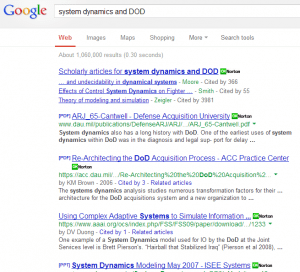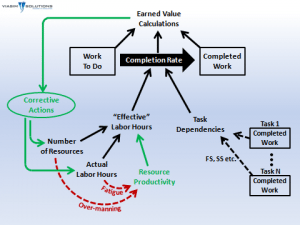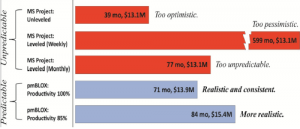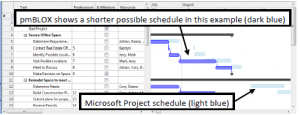Stuart Selip
Stuart Selip is an RFG Principal Analyst and owns and operates Principal Consulting, LLC, (PCLLC), a consulting resource for analyst firms, services and software vendors, and end-user organizations. Stuart's technology coverage areas include IT Governance, Data Quality, Software Development, Model-Driven Architecture, and Offshore Outsourcing. Recent IT research focus has been on negative business outcomes due to poor data quality. Prior, as the Chief Executive Officer of Luxoft’s Consulting Strategies unit, he managed delivery of IT Strategy consulting to Fortune 500/Global 2000 firms in the Financial Services and Banking, Insurance, Media industries, and U.S. Department of Energy.Before his employment at Luxoft, Stuart spent several years at Burton Group, an IT Research and Advisory firm now owned by Gartner Research. Stuart held a number of roles including Vice President of Consulting Services, and Vice President and Service Director of the Application Platform Strategies research service, where he also served as a senior IT industry analyst.
System Dynamics is now for the rest of us!
by Stu Selip, Principal Consulting
That's great, but what is it? According to the System Dynamics Society
System dynamics is a computer-aided approach to policy analysis and design. It applies to dynamic problems arising in complex social, managerial, economic, or ecological systems -- literally any dynamic systems characterized by interdependence, mutual interaction, information feedback, and circular causalitySo, System Dynamics (SD) uses computers to simulate dynamic systems that are familiar to us in the realms of business and technology. OK that sounds great, but why am I writing about SD? A presentation by ViaSim Solution's (ViaSim) president J. Chris White and his ViaSim colleague Robert Sholtes at last Friday's InfoGov Community call piqued my interest, and I think SD will pique your interest too.
What do the big guys do with SD?
 Chris and Robert mentioned the long-time application of SD in the Department of Defense (DOD). A quick Google search revealed widespread use ranging from scholarly articles about simulating the control behavior of fighter planes to pragmatic approaches to re-architecting the acquisition process of the DOD itself. It looks like the DOD appreciates System Dynamics. Here is a clip from that search. Large enterprises can make good use of SD too. In a 2008 Harvard Business Review (HBR) article entitled Mastering the Management System by Robert S. Kaplan and David P. Norton, the authors identify the concept of closed loop management systems in linking strategy with operations, informed by feedback from operational results.
Chris and Robert mentioned the long-time application of SD in the Department of Defense (DOD). A quick Google search revealed widespread use ranging from scholarly articles about simulating the control behavior of fighter planes to pragmatic approaches to re-architecting the acquisition process of the DOD itself. It looks like the DOD appreciates System Dynamics. Here is a clip from that search. Large enterprises can make good use of SD too. In a 2008 Harvard Business Review (HBR) article entitled Mastering the Management System by Robert S. Kaplan and David P. Norton, the authors identify the concept of closed loop management systems in linking strategy with operations, informed by feedback from operational results.
Various studies done in the past 25 years indicate that 60% to 80% of companies fall short of the success predicted from their new strategies. By creating a closed-loop management system, companies can avoid such shortfalls.Their article, which you can see here with the right HBR subscription, discusses how this might be done, without explicitly mentioning System Dynamics.
What about the rest of us?
Most of the rest of us are involved in more mundane tasks than articulating corporate strategy. Many of us work on planning IT projects, with plans defined in Microsoft Project (MSP). How many MSP users have solid training in the tool? I'll wager that many practitioners have learned MSP by the "seat of their pants", never quite understanding why a small change to the options of a project plan has produced dramatically different timelines, or why subtle changes cause plans to oscillate between wildly optimistic, and depressingly pessimistic.  The ViaSim team spoke directly to these points by introducing us to pmBLOX, an SD-empowered MSP-like project planning tool that addresses MSP issues that cause us to lose confidence and lose heart. In this graphic, developed by ViaSim, the black arrows indicate inputs normally available to MSP users. The key differences are shown in the green and red arrows. With pmBLOX, project planners may specify corrective actions like adding workers to projects that are challenged. In addition, project planners can account for project delivery inefficiencies resulting from fatigue, or excessive staffing. You can watch Chris explain this himself, right here. At last, we will be able to respect Brook's Law, the central thesis of which is "adding manpower to a late software project makes it later". Dr. Fred Brooks expanded on this at length in The Mythical Man-Month, published by Addison Wesley in 1975. When I asked Chris about his experience with the challenges of mythical man-month project planning and non-SD project planning solutions he told me
The ViaSim team spoke directly to these points by introducing us to pmBLOX, an SD-empowered MSP-like project planning tool that addresses MSP issues that cause us to lose confidence and lose heart. In this graphic, developed by ViaSim, the black arrows indicate inputs normally available to MSP users. The key differences are shown in the green and red arrows. With pmBLOX, project planners may specify corrective actions like adding workers to projects that are challenged. In addition, project planners can account for project delivery inefficiencies resulting from fatigue, or excessive staffing. You can watch Chris explain this himself, right here. At last, we will be able to respect Brook's Law, the central thesis of which is "adding manpower to a late software project makes it later". Dr. Fred Brooks expanded on this at length in The Mythical Man-Month, published by Addison Wesley in 1975. When I asked Chris about his experience with the challenges of mythical man-month project planning and non-SD project planning solutions he told me
As we often see in the real world, sometimes "throwing people" at the problem puts the project further behind schedule. With these real-world corrective actions and productivity impacts, pmBLOX provides a framework for creating realistic and achievable plans. The biggest risk for any project is to start with an unrealistic baseline, which is often the case with many of today's simple (yet popular) project planning tools.
 Here is an example of the output of MSP and the output of pmBLOX for an actual DOD project. You can see how a minor change in an MSP setting (leveling) made some dramatic and scary changes in the project plan. Notice that the output of pmBLOX looks much more realistic and stable with respect to project plan changes.
Here is an example of the output of MSP and the output of pmBLOX for an actual DOD project. You can see how a minor change in an MSP setting (leveling) made some dramatic and scary changes in the project plan. Notice that the output of pmBLOX looks much more realistic and stable with respect to project plan changes.
What about the learning curve for pmBLOX?
There is good news here. pmBLOX designers adopted the MSP paradigm and allow for direct importing of existing MSP-based plans. Here is an example of how pmBLOX looks, and how it depicts the difference between its plan and the one suggested by MSP. To my eye, the interface is familiar, so adopting and transitioning to pmBLOX should not be very difficult.
and how it depicts the difference between its plan and the one suggested by MSP. To my eye, the interface is familiar, so adopting and transitioning to pmBLOX should not be very difficult.
RFG POV:
System Dynamics (SD) is a powerful simulation approach for dynamic systems and pmBLOX puts some of that SD-power into the hands of project planners. While the ViaSim presenters talked about much more than pmBLOX, I thought the project management paradigm would make a good introduction point for discussing this interesting technology. In September, the ViaSim team will present again at an InfoGov Community call. At that meeting they will, among other topics, address how SD simulations are tested to give SD developers and users confidence in the results of their simulations. If you are an InfoGov member, you will want to attend. If you are not yet an InfoGov member, consider joining.
-The Little Mainframe That Could
RFG Perspective: The just-launched IBM Corp. zEnterprise BC12 servers are very competitive mainframes that should be attractive to organizations with revenues in excess of, or expanding to, $100 million. The entry level mainframes that replace last generation's z114 series can consolidate up to 40 virtual servers per core or up to 520 in a single footprint for as low as $1.00 per day per virtual server. RFG projects that the zBC12 ecosystem could be up to 50 percent less expensive than comparable all-x86 distributed environments. IT executives running Java or Linux applications or eager to eliminate duplicative shared-nothing databases should evaluate the zBC12 ecosystem to see if the platform can best meet business and technology requirements.
Contrary to public opinion (and that of competitive hardware vendors) the mainframe is not dead, nor is it dying. In the last 12 months the zEnterprise mainframe servers have extended growth performance for the tenth straight year, according to IBM. The latest MIPS (millions of instructions per second) installed base jumped 23 percent year-over-year and revenues jumped 10 percent. There have been 210 new accounts since the zEnterprise launch as well as 195 zBX units shipped. More than 25 percent of all MIPS are IFLs, specialty engines that run Linux only, and three-fourths of the top 100 zEnterprise customers have IFLs installed. The ISV base continues to grow with more than 7,400 applications available and more than 1,000 schools in 67 countries participate in the IBM Academic Initiative for System z. This is not a dying platform but one gaining ground in an overall stagnant server market. The new zBC12 will enable the mainframe platform to grow further and expand into lower-end markets.
zBC12 Basics
The zBC12 is faster than the z114, using a 4.2GHz 64-bit processor and has twice the maximum memory of the z114 at 498 GB. The zBC12 can be leased starting at $1,965 a month, depending upon the enterprise's credit worthiness, or it can be purchased starting at $75,000. RFG has done multiple TCO studies on the zEnterprise Enterprise Class server ecosystems and estimates the zBC12 ecosystem could be 50 percent less expensive than x86 distributive environments having the equivalent computing power.
On the analytics side, the zBC12 offers the IBM DB2 Analytics Accelerator that IBM says offers significantly faster performance for workloads such as Cognos and SPSS analytics. The zBC12 also attaches to Netezza and PureData for Analytics appliances for integrated, real-time operational analytics.
Cloud, Linux and Other Plays
On the cloud front, IBM is a key contributor to OpenStack, an open and scalable operating system for private and public clouds. OpenStack was initially developed by RackSpace Holdings and currently has a community of more than 190 companies supporting it including Dell Inc., Hewlett-Packard Co. (HP), IBM, and Red Hat Inc. IBM has also added its z/VM Hypervisor and z/VM Operating System APIs for use with OpenStack. By using this framework, public cloud service providers and organizations building out their own private clouds can benefit from zEnterprise advantages such as availability, reliability, scalability, security and costs.
As stated above, Linux now accounts for more than 25 percent of all System z workloads, which can run on zEnterprise systems with IFLs or on a Linux-only system. The standalone Enterprise Linux Server (ELS) uses the z/VM virtualization hypervisor and has available more than 3,000 tested Linux applications. IBM provides a number of specially-priced zEnterprise Solution Editions, including the Cloud-Ready for Linux on System z, which turns the mainframe into an Infrastructure-as-a-Service (IaaS) platform. Additionally, the zBC12 comes with EAL5+ security, which satisfies the high levels of protection on a commercial server.
The zBC12 is an ideal candidate for mid-market companies to act as the primary data server platform. RFG believes organizations will save up to 50 percent of their IT ecosystem costs if the mainframe handles all the data serving, since it provides a shared-everything data storage environment. Distributed computing platforms are designed for shared-nothing data storage, which means duplicate databases must be created for each application running in parallel. Thus, if there are a dozen applications using the customer database, then there are 12 copies of the customer file in use simultaneously. These must be kept in sync as best as possible. The costs for all the additional storage and administration can make the distributed solution more costly than the zBC12 for companies with revenues in excess of $100 million. IT executives can architect the systems as ELS only or with a mainframe central processor, IFLs and zBX for Microsoft Corp. Windows applications, depending on the configuration needs.
Summary
The mainframe myths have misled business and IT executives into believing mainframes are expensive and outdated, and led to higher data center costs and sub-optimization for mid-market and larger companies. With the new zEnterprise BC12 IBM has an effective server platform that can counter the myths and provide IT executives with a solution that will help companies contain costs, become more competitive, and assist with a transformation to a consumption-based usage model.
RFG POV: Each server platform is architected to execute certain types of application workloads well. The BC12 is an excellent server solution for applications requiring high availability, reliability, resiliency, scalability, and security. The mainframe handles mixed workloads well, is best of breed at data serving, and can excel in cross-platform management and performance using its IFLs and zBX processors. IT executives should consider the BC12 when evaluating platform choices for analytics, data serving, packaged enterprise applications such as CRM and ERP systems, and Web serving environments.
System Dynamics for the rest of us
System Dynamics is now for the rest of us!
That's great, but what is it?
According to the System Dynamics Society
System dynamics is a computer-aided approach to policy analysis and design. It applies to dynamic problems arising in complex social, managerial, economic, or ecological systems -- literally any dynamic systems characterized by interdependence, mutual interaction, information feedback, and circular causality
So, System Dynamics (SD) uses computers to simulate dynamic systems that are familiar to us in the realms of business and technology. OK that sounds great, but why am I writing about SD? A presentation by ViaSim Solution's (ViaSim) president J. Chris White and his ViaSim colleague Robert Sholtes at last Friday's InfoGov Community call piqued my interest, and I think SD will pique your interest too.
What do the big guys do with SD?
 Chris and Robert mentioned the long-time application of SD in the Department of Defense (DOD). A quick Google search revealed widespread use ranging from scholarly articles about simulating the control behavior of fighter planes to pragmatic approaches to re-architecting the acquisition process of the DOD itself. It looks like the DOD appreciates System Dynamics. Here is a clip from that search.
Chris and Robert mentioned the long-time application of SD in the Department of Defense (DOD). A quick Google search revealed widespread use ranging from scholarly articles about simulating the control behavior of fighter planes to pragmatic approaches to re-architecting the acquisition process of the DOD itself. It looks like the DOD appreciates System Dynamics. Here is a clip from that search.
Large enterprises can make good use of SD too. In a 2008 Harvard Business Review (HBR) article entitled Mastering the Management System by Robert S. Kaplan and David P. Norton, the authors identify the concept of closed loop management systems in linking strategy with operations, informed by feedback from operational results.
Various studies done in the past 25 years indicate that 60% to 80% of companies fall short of the success predicted from their new strategies. By creating a closed-loop management system, companies can avoid such shortfalls.
Their article, which you can see here with the right HBR subscription, discusses how this might be done, without explicitly mentioning System Dynamics.
What about the rest of us?
Most of the rest of us are involved in more mundane tasks than articulating corporate strategy. Many of us work on planning IT projects, with plans defined in Microsoft Project (MSP). How many MSP users have solid training in the tool? I'll wager that many practitioners have learned MSP by the "seat of their pants", never quite understanding why a small change to the options of a project plan has produced dramatically different timelines, or why subtle changes cause plans to oscillate between wildly optimistic, and depressingly pessimistic.

The ViaSim team spoke directly to these points by introducing us to pmBLOX, an SD-empowered MSP-like project planning tool that addresses MSP issues that cause us to lose confidence and lose heart.
In this graphic, developed by ViaSim, the black arrows indicate inputs normally available to MSP users.
The key differences are shown in the green and red arrows. With pmBLOX, project planners may specify corrective actions like adding workers to projects that are challenged. In addition, project planners can account for project delivery inefficiencies resulting from fatigue, or excessive staffing. You can watch Chris explain this himself, right here.
At last, we will be able to respect Brook's Law, the central thesis of which is "adding manpower to a late software project makes it later". Dr. Fred Brooks expanded on this at length in The Mythical Man-Month, published by Addison Wesley in 1975.
When I asked Chris about his experience with the challenges of mythical man-month project planning and non-SD project planning solutions he told me
As we often see in the real world, sometimes "throwing people" at the problem puts the project further behind schedule. With these real-world corrective actions and productivity impacts, pmBLOX provides a framework for creating realistic and achievable plans. The biggest risk for any project is to start with an unrealistic baseline, which is often the case with many of today's simple (yet popular) project planning tools.
 Here is an example of the output of MSP and the output of pmBLOX for an actual DOD project. You can see how a minor change in an MSP setting (leveling) made some dramatic and scary changes in the project plan. Notice that the output of pmBLOX looks much more realistic and stable with respect to project plan changes.
Here is an example of the output of MSP and the output of pmBLOX for an actual DOD project. You can see how a minor change in an MSP setting (leveling) made some dramatic and scary changes in the project plan. Notice that the output of pmBLOX looks much more realistic and stable with respect to project plan changes.
What about the learning curve for pmBLOX?
There is good news here. pmBLOX designers adopted the MSP paradigm and allow for direct importing of existing MSP-based plans. Here is an example of how pmBLOX looks, and how it depicts the difference between its plan and the one suggested by MSP. To my eye, the interface is familiar, so adopting and transitioning to pmBLOX should not be very difficult.
and how it depicts the difference between its plan and the one suggested by MSP. To my eye, the interface is familiar, so adopting and transitioning to pmBLOX should not be very difficult.
The Bottom Line
System Dynamics (SD) is a powerful simulation approach for dynamic systems and pmBLOX puts some of that SD-power into the hands of project planners. While the ViaSim presenters talked about much more than pmBLOX, I thought the project management paradigm would make a good introduction point for discussing this interesting technology.
In September, the ViaSim team will present again at an InfoGov Community call. At that meeting they will, among other topics, address how SD simulations are tested to give SD developers and users confidence in the results of their simulations. If you are an InfoGov member, you will want to attend. If you are not yet an InfoGov member, consider joining.
Oh yes, that Data Quality Survey
By mid-August, I should be able to announce the kick-off of the InfoGov "Business Impacts of Poor Data Quality" survey that will be available on-line to InfoGov members. As I've indicated in prior posts, Steve Adler and the InfoGov Community, Principal Consulting, The Robert Frances Group, and Chaordix have all invested much in bringing the survey to this point. I hope you will take the time to respond and give us the benefit of your experiences.
Harold (Hal) Kreitzman
CEO at Experture. Hal is a senior executive with a strong, diverse business & technology background in financial services having worked for several global financial institutions, including The Blackstone Group where he was the Senior Technology Executive for 6 years. He has an extensive background in all aspects of information technology. He has focused career on applying the appropriate mix of people, process and technology to solve business challenges and enhance corporate value. Specifically, Hal audited, reengineered and managed several different types of organizational areas including finance / accounting analytical support, application development, data-center operations, and firm-wide technology. He also managed the development / operation of the technological components of global branch and business integration; established strong partnerships with other operating groups and business units; and managed mission-critical processes/systems and firm-wide initiatives to realize growth/profitability targets.
Larry Bonfante
Larry Bonfante has held executive leadership positions over the past 30 years in the Financial, Pharmaceutical, Not for Profit, Consulting, and Sports and Entertainment industries. He has received numerous industry accolades including being nominated for the CIO Hall of Fame in 2013, being named as one of CIO Magazine’s CIO 100 in 2011 and one of Computerworld’s Premier 100 IT Leaders in 2009. As Chief Information Officer at the United States Tennis Association, Larry’s team is responsible for all information technology related services supporting the US Open, the most highly attended annual sporting event in the world. Larry is the founder of CIO Bench Coach, LLC an executive coaching practice for IT executives and the author of the book “Lessons in IT Transformation” published by John Wiley & Sons. Larry has served as a mentor and executive coach for many IT leaders in various industries. He has served as both President and Chairman of the Fairfield-Westchester chapter of SIM and is a founding member of the CIO Executive Council. Larry has been a guest lecturer for the Masters’ Degree programs at Columbia University, NYU, and Polytechnic Institute. He is an accomplished public speaker who has delivered keynote presentations at many major industry conferences, runs leadership workshops for world class organizations and writes leadership blogs for both CIO Insight magazine and Enterprise Efficiency.


